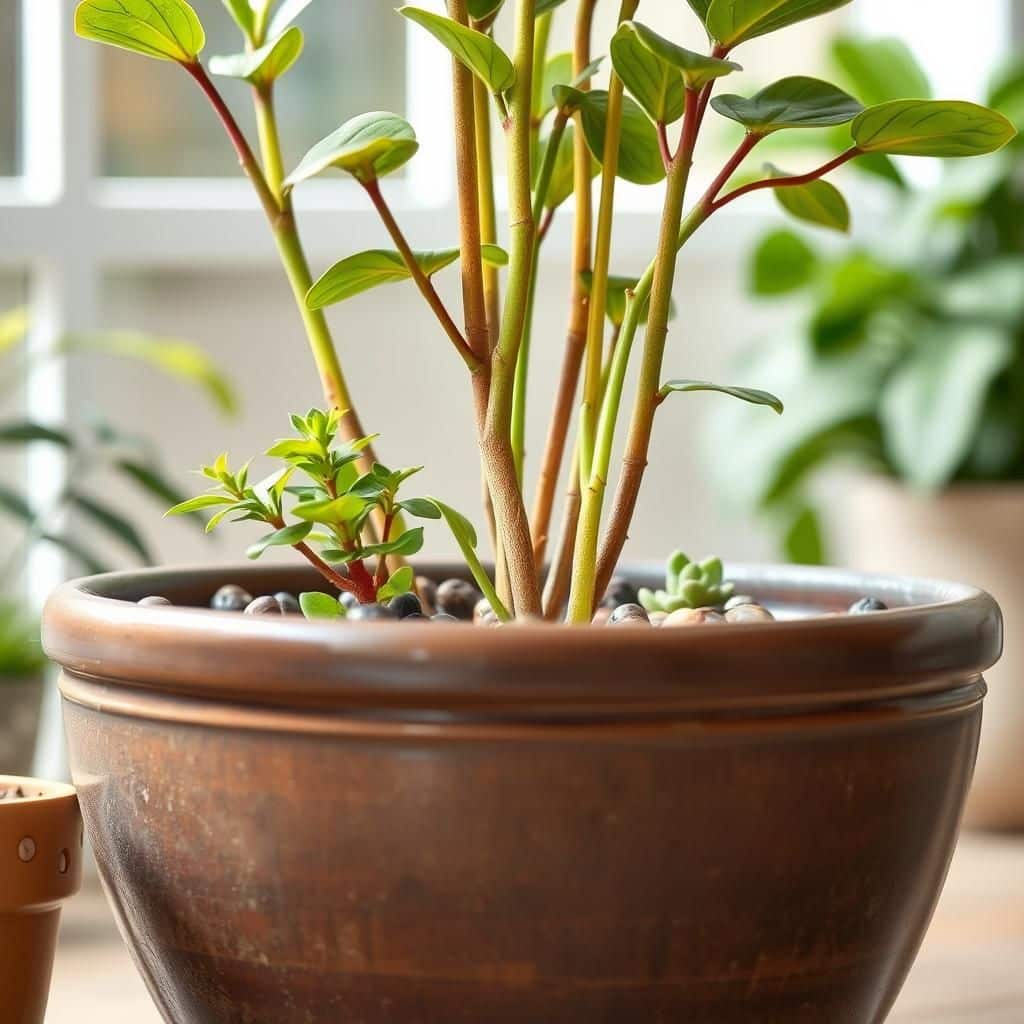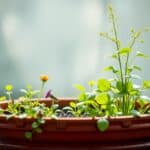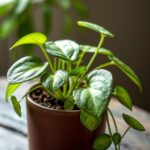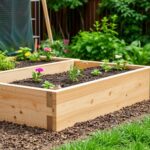What Do You Put in the Bottom of a Planter to Take Up the Space? Essential Tips and Options

When it comes to planting, maximizing space in your planter is essential for healthy root development and efficient use of soil. Many gardeners wonder what to place at the bottom of their planters to fill excess space and improve drainage. This article explores various materials and techniques that can help optimize your planters. From using lightweight fillers to incorporating organic matter, we’ll delve into practical options that not only save soil but also enhance the overall health of your plants. Whether you’re a seasoned gardener or a beginner, these essential tips will help you make informed choices for your gardening projects.
What to Use at the Bottom of a Planter to Save Space
Using fillers at the bottom of a planter can significantly reduce the amount of soil needed while still ensuring healthy plant growth. One effective approach is to utilize materials that promote drainage and aeration while taking up space. Options such as empty plastic bottles, Styrofoam peanuts, or shredded cardboard can be excellent choices. By placing these materials at the bottom of your planter, you allow excess water to drain away, preventing root rot while also giving your plants a more stable environment. Additionally, these fillers can help retain some moisture for the plants as they decompose gradually, assisting in nutrient release as well.
Empty Plastic Bottles
Using empty plastic bottles is an eco-friendly way to fill the bottom of your planter. Cut them in half and position them upside down to create air pockets that facilitate drainage while occupying space. This method not only saves soil but also helps in reducing plastic waste in the environment.
Styrofoam Peanuts
Styrofoam peanuts are lightweight and great for filling gaps at the bottom of planters. They allow for excellent drainage and prevent soil from becoming waterlogged, promoting a healthier root system. Additionally, their lightweight nature makes them easy to handle, perfect for large containers.
Shredded Cardboard
Shredded cardboard is another surprisingly effective filler for planters. As it decomposes, it enriches the soil with organic matter and improves aeration. Be sure to mix it with soil to avoid compaction and ensure it doesn’t block the drainage holes.
See also:
Wood Chips
Wood chips can be a sustainable option for adding bulk to your planter without using excessive soil. They provide good drainage and gradually break down, enriching the soil over time. Additionally, they can deter weed growth and keep the soil temperature more stable.
Rock or Gravel
Using rock or gravel provides excellent drainage at the bottom of a planter. These materials are durable and help keep the soil separated from the water at the base, preventing root rot. Their weight can stabilize larger planters, reducing the chance of toppling in strong winds.
| Material | Benefits |
|---|---|
| Plastic Bottles | Eco-friendly, promotes drainage |
| Styrofoam Peanuts | Lightweight, prevents soil compaction |
| Shredded Cardboard | Organic matter enrichment, good aeration |
| Wood Chips | Stable soil temperature, reduces weeds |
| Rock or Gravel | Excellent drainage, stabilizes planters |
Essential Materials for Bottom Layer of Planters
When considering what to put in the bottom of a planter to optimize space, it is important to choose materials that promote drainage while also preventing soil erosion. Common options include rocks, pebbles, or gravel since they allow water to flow freely while reducing the risk of soil clogging. Alternatively, you might opt for items like landscape fabric or coffee filters to act as a barrier between the soil and the drainage material, ensuring that your plants remain healthy and well-nourished, without excess water buildup.
Using Rocks for Drainage
Utilizing rocks in the bottom of your planter is a traditional method to facilitate drainage. They provide excellent bulk and allow excess water to escape, thereby preventing root rot in your plants. However, be mindful of the size of the rocks; larger stones can create air pockets that hold excessive moisture, while smaller rocks or gravel can create a solid foundation that might not allow water to pass freely.
Incorporating Expanded Clay Pebbles
Expanded clay pebbles are a lightweight option that can effectively take up space in your planter while promoting aeration. These baked clay balls are pH-neutral and provide adequate drainage, making them a popular choice among indoor gardeners. They also help retain some moisture, which can be beneficial for plants that prefer consistent hydration.
See also:
The Role of Landscape Fabric
Landscape fabric serves a dual purpose when placed at the bottom of your planter. Not only does it act as a barrier to keep soil from escaping, but it also permits water to pass through easily. This fabric helps to prevent soil compaction and allows for better root development. Moreover, it can prevent weeds from growing up through your planting medium, keeping your garden tidy and healthy.
Benefits of Using Coffee Filters
Repurposing coffee filters in the bottom of your planters is a cheap and effective way to prevent soil erosion. They filter out small soil particles while allowing excess water to drain, which can be particularly helpful for small or handmade planters where soil loss can be a concern. Plus, using coffee filters is an eco-friendly solution that helps reduce waste in landfills.
Advantages of Packing Peat Moss
Peat moss can be a beneficial addition to the bottom layer of a planter. Though it is primarily used as a soil amendment, it can help with moisture retention and increase the aeration of the soil above. When layered properly, peat moss can provide an effective balance between retaining moisture and allowing water to drain, which is particularly advantageous for plants with varying water needs.
Questions from Our Readers
What is the purpose of filling the bottom of a planter?
To enhance drainage and prevent soil from escaping through the holes, filling the bottom of a planter is essential. It helps retain moisture while allowing excess water to flow away, preventing root rot and promoting healthier plant growth.
Can I use rocks or gravel at the bottom of my planter?
Yes, using rocks or gravel at the bottom of a planter is a popular choice, as they provide excellent drainage and create a barrier that keeps the soil in place. This method is especially suitable for plants that require drier conditions or have sensitive roots.
See also:
Are there alternative materials for filling the bottom of a planter?
Absolutely, you can use a variety of alternative materials such as styrofoam bits, chunks of wood, or shredded paper. These materials can help reduce weight and take up space while also offering good drainage properties, supporting overall plant health.
How deep should the layer be at the bottom of the planter?
The layer at the bottom of the planter should generally be around 2 to 4 inches deep, depending on the size of your planter. This depth is sufficient to promote drainage without compromising the soil area needed for your plants' roots.

If you want to read more articles like What Do You Put in the Bottom of a Planter to Take Up the Space? Essential Tips and Options, we recommend you check out our Planter category.
Leave a Reply
Related Articles